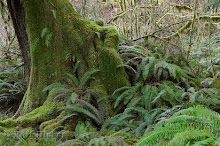Brazilian President Luiz Inacio Lula da Silva
Because many of the countries that the Amazon resides in have bad economies, the main priority that drives many of the people and organizations to strip the Amazon of its resources is money. The Amazon rainforest is a huge untapped mass of resources, like trees minerals and oil, which can yield a high profit by selling them to more developed countries. Because of this, “the simplest solution to these [economic] problems appears to lie in the resources of the Amazon. The governments hope that they can feed their poor and repay their debts through the development of the rainforest” (Darv). The nations that the Amazon lies within, argue that because countries like the United States have ravaged their environment for resources, they have all rights to use the Amazon how they please. “Developing the rainforest is a short-term solution at best. It quickly uses up resources that cannot be replaced,” and, “when the resources have been used, the economic and social problems that the Amazonian nations stared with will remain” (Darv). This means that even if the Amazonian nations can ravage the rainforest of its resources, it will be in vain because once it is gone, they will require a new source of revenue.
The governments of the world have the power to stop the destruction through laws and restrictions, but many of the laws that were made to protect the rainforest are weak and not well enforced. In addition, many of the more developed countries look the other way because the Amazon is a cheap way of getting the resources they need at a premium. “Government permits are required to log in the Amazon. In reality, however, environmental agencies lack the authority to enforce logging regulations” (Darv). Because there aren’t enough officers in Brazil’s environmental protection agency to patrol even half of the rainforest, many of the mining and deforesting isn’t caught or stopped. “Ninety-four percent of all fines that the officers do impose are thrown out in court. The result is that 80 percent of all logging in the Amazon in done illegally” (Darv).
Because money is such a powerful motivator for those who take the resources from the Amazon, the world’s governments can use their economic power to slow or even stop the destruction of the rainforest. If an Amazonian nation wanted, “to build a road into the Amazon, the chances are good that it will turn to a foreign bank for help” (Darv). Without a loan to pay for the build, the Amazonian nation wouldn’t be able to complete the build. The governments of Brazil and all over the world need to band together under the Catholic Social Teaching theme of the Role of Government and Subsidiary to increase their control of the illegal destruction of the Amazon. Catholics have to petition their governments to stop them from overlooking the disrespect with which miners and lumberers are treating the rainforest and its inhabitants.



